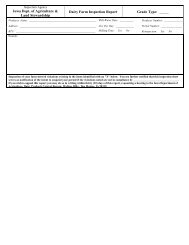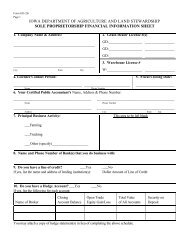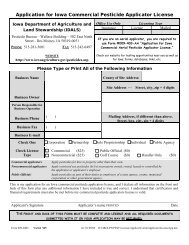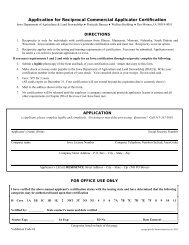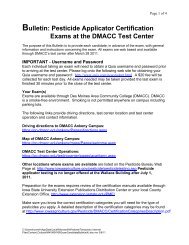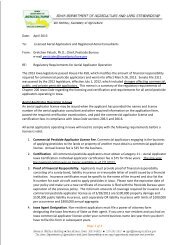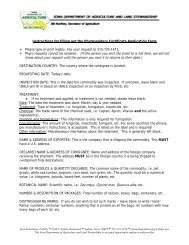Exhibit C: Detailed Background, Work Group Recommendations
Exhibit C: Detailed Background, Work Group Recommendations
Exhibit C: Detailed Background, Work Group Recommendations
Create successful ePaper yourself
Turn your PDF publications into a flip-book with our unique Google optimized e-Paper software.
Other state and federal programs that have shown success in Iowa include:<br />
• Technical and financial support is provided through the USACE to levee districts and<br />
communities that participate in its PL84‐99 ____________ Program. Program requirements<br />
require participating local sponsors to build and maintain levees to USACE standards, and in<br />
return the USACE provides technical and financial assistance in the event levees are<br />
damaged during flood events.<br />
The USACE also provides program and technical support to efforts aimed at encouraging<br />
non‐structural alternatives to levee repairs in the aftermath of 2008 flooding. This support<br />
was fed through the Regional Interagency Levee Task Force (now the Regional Flood Risk<br />
Management Team) and the Iowa FRMT. As a result, a non‐structural alternative (NSA) is<br />
being implemented at the Louisa Levee District 11. This NSA will make more efficient use of<br />
public dollars, provide for additional flood storage, improve wildlife habitat and decrease<br />
flood damage risks to two communities while maintaining flood damage protection to a<br />
locally important county highway. The Louisa LD11 project will provide an example and case<br />
study for future NSA projects throughout the Midwest.<br />
• Wetland mitigation banking provides for cost‐effective and science‐based mitigation for<br />
mitigating negative effects on wetlands from public infrastructure projects, private<br />
development and agriculture. The first wetland mitigation bank restored previously‐drained<br />
land in the Prairie Pothole area. Wetland banking can help expedite well‐planned projects<br />
that improve floodplain management. Safeguards need to be in place to avoid wetland<br />
banks being used to accommodate inappropriate development in floodplains.<br />
• The Wetland Reserve Program (WRP) is a voluntary program offering landowners the<br />
opportunity to protect, restore, and enhance wetlands on their property. The NRCS<br />
provides technical and financial support to help landowners with their wetland restoration<br />
efforts. The NRCS goal is to achieve the greatest wetland functions and values, along with<br />
optimum wildlife habitat, on every acre enrolled in the program. This program offers<br />
landowners an opportunity to establish long‐term conservation and wildlife practices and<br />
protection. There are ________ acres of WRP easements in Iowa, with approximately<br />
______% being located in floodplains.<br />
• The Emergency Watershed Protection (EWP) Program undertakes emergency measures<br />
including the purchase of flood plain easements for runoff retardation and soil erosion<br />
prevention to safeguard lives and property from floods, drought, and the products of<br />
erosion on any watershed whenever fire, flood or any other natural occurrence is causing or<br />
has caused a sudden impairment of the watershed. EWP Floodplain Easement funds<br />
allocated to Iowa as a response to 2008 flooding were focused in several floodplain<br />
corridors based on input provided by state agencies and non‐governmental organizations.<br />
Similar actions were taken after extensive flooding in 1993, which helped to establish the<br />
Iowa River Corridor and to enable the buy‐out of the former Levee District 8 in Louisa<br />
County.<br />
• The Conservation Reserve Program (CRP) administered by the USDA Farm Services Agency<br />
(FSA) has been very successful in providing year‐around cover. CRP enrollments have<br />
provided for localized increases in water infiltration. Soil conservation from well‐developed<br />
roots also decreases surface runoff and keeps water on the landscape.<br />
• Conservation Reserve Enhancement Program (CREP) is providing focused nitrate reduction<br />
benefits where it has been implemented. Around 35 projects are in place, with another 18<br />
under construction and another 70 in the process of being enrolled. Existing sites provide<br />
61



![Ch 44, p.1 Agriculture and Land Stewardship[21] IAC 4/23/08 - Iowa ...](https://img.yumpu.com/49992480/1/171x260/ch-44-p1-agriculture-and-land-stewardship21-iac-4-23-08-iowa-.jpg?quality=85)

